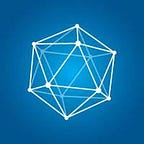Open-source tools to fight wildfires: Dymaxion Platform
As a consequence of climate change, wildfires have increased in frequency and intensity. This posits a significant threat to biodiversity, economic activities and human life.
By combining satellite imagery and artificial intelligence, we have built a tool to take immediate and efficient action against this issue. This article provides detailed information about the tool, why it is important and how you can use it yourself.
A large-scale issue
The effects of global warming are causing a widespread global increase in natural disasters, including wildfires. Although in many ecosystems they serve as natural environmental regulators and increase biodiversity, the temperature rise has caused an extremely harmful surge of these climatic events in terms of quantity, duration and intensity.
This tendency is expected to prevail in the following years: a global temperature rise of at least 1.5 °C is projected, but it could go up to 4 °C. In order to keep this figure as low as possible, effective measures need to be taken immediately, and having precise information about fire behavior and its consequences is essential for this purpose.
Fighting wildfires not only allows for the protection of local flora and fauna, but also constitutes a way of fighting climate change directly. When there is a fire, a large amount of CO2 is released. In turn, there is less vegetation available to absorb this emission, causing the remaining vegetation to dry out and making it the perfect fuel for a new event to take place.
How can we fight wildfires from space?
Nowadays, we live in a context where there is plenty of data: most of it is the result of geospatial imagery generated by satellites, radars, drones, and sensors, among many others, which provide information about large expanses of land consistently and continuously.
However, there is a shortage of practical information which could be used to take preventive and global warming mitigation measures. To provide a solution to this situation, we created Satproc and Unetseg, two open-source tools which analyze satellite imagery of burned areas after a fire.
Several steps need to be followed in order to get this information. We initially identify a set of geographic areas where there was a fire, based on our informed knowledge. Then, we access satellite imagery of the already burned area and manually pinpoint this “ground truth.” We also record and analyze imagery from the same area to determine the vegetation status before the fire.
Based on this, we train the algorithm to detect change of state patterns, so as to identify other areas which have suffered from fires. As a result, not only can we establish the surface area of burned vegetation, but also we can develop thresholds which determine the degree of harm, as well as further understand which were the conditions of the area before the event.
If you would like to hear more about the technical aspects of fire mapping, watch the following video:
Governments, organizations and companies which focus on fighting climate change, which are active on the area, or which can suffer any kind of consequence from wildfires are better suited to take action to restore the local flora and fauna, and to anticipate new events. With Satproc and Unetseg, we can also detect technical anomalies which occur during fires, and generate preventive warnings.
Open-source tools available for everyone
At Dymaxion Labs, our goal is to provide solutions to problems of considerable socio-environmental impact, for everyone to use and improve. Accordingly, we published an open-source code in our GitHub, which can also be run directly from Google Colab. We used free and public access imagery from the Sentinel-2 satellite with the aim of enabling an easy replication of the analysis in other areas of the world.
In line with our open-source policy, we share our knowledge and we offer open activities for the community to further explain how to take advantage of our solutions, answer any questions, and discuss the topics we address. At the end of 2021, we organized a workshop on fires. The videos in this article were recorded during that event.
The two packages that we used were developed to be used together, as well as separately, depending on the analysis needs of each user. Also, our goal was to enable anyone who would like to use them to do so without the need of being a specialist in the field. Watch the following tutorial to use Satproc and Unetseg yourself:
If you have any questions or if you would like to hear more about our solutions, follow us on our social networks or contact us.
